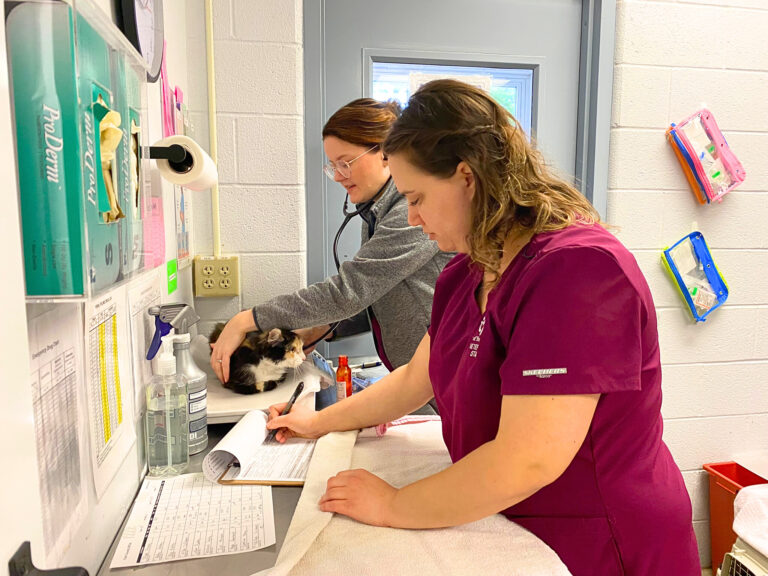Each year in the spring, summer, and early fall, free-roaming community cats give birth to countless litters of kittens. This period, referred to as “kitten season,” is traditionally the busiest time of year for animal shelters, rescues, and trap-neuter-return (TNR) clinics. Our best defense against an overwhelming kitten season is to diligently spay and neuter our community cat population, at all times of the year. Though kitten season is when TNR clinics tend to be busiest, it’s actually very important to concentrate TNR efforts as early in the year as possible to prevent those kittens from ever being born in the first place.
Because female cats go back into heat very quickly after giving birth, having a litter of kittens is not a reason to delay spaying. If you wait until after the kittens have been weaned, a female cat will likely already be pregnant again, or will disappear until after another litter is born. We recommend trapping these nursing female cats and bringing them in right away for spaying and vaccination. If you trap a cat who you know is nursing, it is important to alert the clinic staff when you bring the cat in. That way, they can ensure the cat’s surgery gets performed on the day of drop-off and she can go back to her kittens later that evening.
At the York County SPCA Spay/Neuter Clinic, kittens must weigh at least three pounds to come through our TNR program. Three pounds usually corresponds to about 12 weeks of age, which is the age a kitten must be to receive a Rabies vaccine. This vaccination is included in our services when you bring a cat in for TNR. The ear tip that a cat or kitten receives when coming through a TNR program indicates that the animal has been both spayed/neutered and vaccinated against the Rabies virus. While other clinics’ policies may differ, we require kittens to be old enough to receive their Rabies vaccination at the time of their spay/neuter as the chances of that cat being caught and brought in for veterinary care again are very slim. Pennsylvania has one of the highest concentrations of Rabies cases in the country. Because Rabies is a fatal, zoonotic (can be transmitted to people) disease, we take its prevention and management very seriously.
There are a few ways to estimate whether a kitten weighs enough to come through our TNR program:
- Weigh your humane trap (with any bedding or food you plan on using to trap) on an accurate scale before setting it to catch any kittens. After trapping, reweigh the trap with the kitten in it. The difference in measured weights will be approximately equal to the weight of the kitten. Remember – we are looking for the kitten to weigh 3 pounds to come through our TNR program!
- If the kittens are social and handleable, you can look at their teeth to get an estimate of their age. All baby teeth will have erupted by 12 weeks of age. By 14 weeks of age, their first adult teeth (which are the 2 incisors right in the middle) will be coming in, with the rest of the incisor teeth quickly following. Never handle a kitten who seems feral or expose yourself to the possibility of getting bit.
- The more you work with TNR and cats in general, the better you will become at estimating a cat’s weight just by eyeballing it through the trap. If you are unsure whether a kitten will be big enough, feel free to ask a staff member to take a look when dropping the kitten off for TNR. Though we can’t ensure 100% accuracy, an experienced eye can help guide you until you are more familiar with estimating a kitten’s age and weight.
Walk-ins are accepted for our TNR program Monday – Thursday from 8:00-8:30 a.m. (subject to change). Each cat must arrive in a separate humane trap, and we will accept one walk-in per person, per day. To schedule appointments to bring multiple cats to the clinic at a time, please email clinic@ycspca.org.




